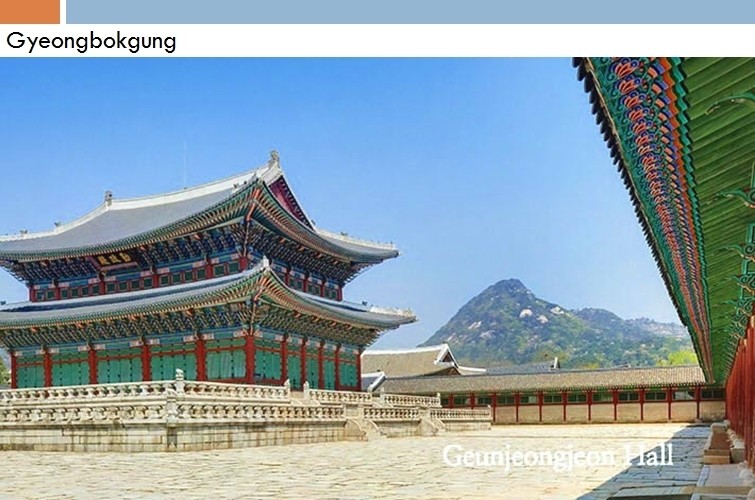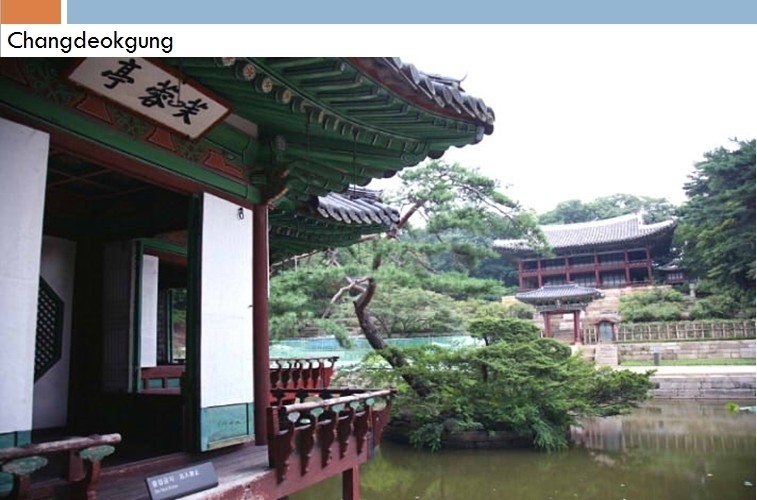Palaces / Museu
Royal Palaces / Museums
Gyeongbokgung
Changdeokgung
Changgyeonggung
Deoksugung
Gyeonghuigung
Unhyeongung Palace
Unhyeongung Palace was formerly a private residence of Prince Regent Heungseon (1820-1898), the father of Emperor Gojong (the 26th king of the Joseon Dynasty). The young Gojong lived here before he assumed the throne. The royal wedding ceremony of Emperor Gojong and Empress Myeongseong also took place here. During the reign of Emperor Gojong, Unhyeongung was as grand as any other palace in Seoul, but today's complex is much smaller than its original size. Over time, many of the palace buildings have been heavily damaged and destroyed during various conflicts. A reenactment of Emperor Gojong and Empress Myeongseong’s royal wedding ceremony is held on the grounds of the palace every year. Events are also held regularly highlighting traditional Korean royal culture. Unhyeongung Palace is a great sight to add to a day itinerary as the popular Insadong Street and Bukchon Hanok Village are located nearby.
Museums
National Museum of Korea
The six-story building of the National Museum of Korea is ranked as the sixth largest museum in the world. The museum building is constructed so as to withstand violent oscillation in an earthquake. The architectural style harmoniously blends traditional and contemporary styles. It was built to house more than 140,000 national relics and artifacts, and also to serve as a complex cultural facility with a sculpture garden, open plaza and outdoor exhibition area. Also, artificial falls, streams, and green fields have been cultivated to create a beautifully landscaped space for visitors.
- Exhibition area
The museum is divided into two exhibition areas for the purpose of displaying relics and artifacts through permanent and special exhibitions. The permanent exhibition consists of themed galleries including: a prehistory and ancient history gallery; a medieval and early modern history gallery; a calligraphy and art gallery; a sculpture and crafts gallery; and an Asian gallery and donations gallery. The special exhibitions are made up of various cultural arts events and programs alongside permanent exhibitions.
National Folk Museum of Korea
The National Folk Museum of Korea displays the culture and folk history of the Korean people from prehistoric times to the end of the Joseon Dynasty. The museum is situated in the precinct of Gyeongbokgung (Palace) which is a typical palace of the Joseon Dynasty. It holds a variety of seasonal exhibitions and events each year alongside a permanent exhibition. Each year more than two million visitors come to visit and explore the roots of the Korean life style.
Established in 1945 as the National Museum of Ethnology, the current museum building was remodeled and reopened as the National Folk Museum of Korea in 1993. Since its establishment the museum has dedicated itself to studying and researching the folk history of Korea, and collecting artifacts from different Korean regions in order to pass on an insight into the lifestyle and culture of Koreans. The museum achieves this by offering visitors various seminars, exhibitions, performance art, concerts and hands-on activities. Thus, visiting the National Museum of Korea is a gateway to a deep understanding of the life and culture of the Koreans people.
Experiencing traditional Korean culture
Located inside Gyeongbokgung (Palace), the National Folk Museum of Korea is constructed in the traditional Korean style comprising several stories with a pagoda on top. The three main exhibition halls at the museum cover different aspects of Korean life, as well as displaying various local costumes, musical instruments and festivals.
Seoul Museum of History
The Seoul Museum of History is the only museum in Korea that represents the city’s history and culture. Since its establishment on the former site of Gyeonghuigung (Palace) in 2002, the museum has offered visitors the chance to experience 600 years of Seoul’s history and culture through interactive exhibitions. The three-story museum is divided thematically into three exhibition areas, including a special exhibition area, a permanent exhibition area and a hall that exhibits collections donated by the public.
The museum offers accessible and interactive exhibitions to the public with various hands-on programs. For example, visitors are allowed to touch and explore the exhibits on display, which are replicas of originals in the museum. In addition, the museum offers the U-Exhibit Guidance System, an automatic translator (various languages are available) for visitors, which makes every tour convenient and interesting.
War Memorial of Korea
The War Memorial of Korea was established to remember the Korean War (6. 25. 1950 ~ 7. 27.1953) and to symbolize the desire for peaceful reunification of Korea. The museum consists of 6 individual exhibition halls and a combat experience room, a screening room and an outdoor exhibition area with memorial statues.
Recording the history of peace; remembering war
The Statue of Brothers located in the south-west corner of the outdoor exhibition area at the museum symbolizes the Korean War and the hope for reunification. The statue depicts a scene where a family’s oldest son, a South Korean soldier and his younger brother, a North Korean soldier meet on a battlefield. Their embrace expresses reconciliation, love and forgiveness.
There is an extensive garden area around the memorial with an artificial waterfall, and a lake where visitors can picnic whilst enjoying the beautiful landscape. The museum houses more than 10,000 artifacts in the indoor and outdoor exhibition areas. It takes visitors about three hours to complete the tour. The first floor exhibition hall features a history of war from prehistoric times up to the Korean War. The combat experience room on the third floor offers visitors a special opportunity to experience a simulated life and death situation on the battlefield through special effects.









